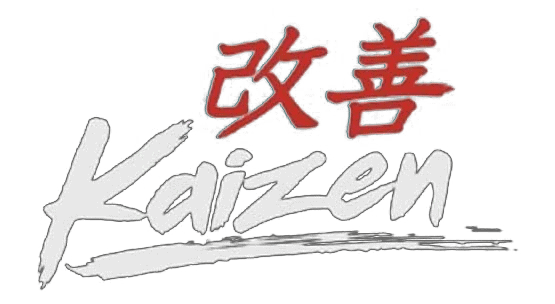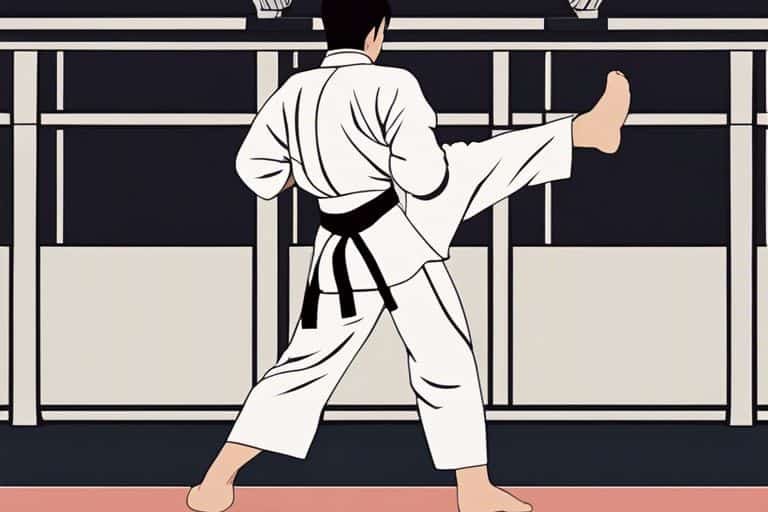Have you ever wondered how imperative flexibility is in Kyokushin Karate? Flexibility plays a crucial role in this martial art, affecting not only your performance but also minimising the risk of injuries. In this blog post, we will explore the benefits of being flexible in Kyokushin Karate and why it is essential for your overall success. To start, let’s delve into the importance of stretching and Stretching for Kyokushin and Karate by Steve Denoo.
Key Takeaways:
- Flexibility is crucial for effective performance: Flexibility is essential for executing high kicks, maintaining balance, and avoiding injury in Kyokushin Karate.
- Improves overall martial arts abilities: Flexibility enhances speed, power, and agility, enabling practitioners to perform advanced techniques with ease.
- Prevents injuries and promotes longevity: A flexible body is less prone to strains and sprains, allowing practitioners to train consistently and achieve long-term success in Kyokushin Karate.
- Aids in maintaining proper form and posture: Flexibility assists in achieving correct stances, movements, and body alignment, contributing to better technique execution and overall performance.
- Increases mental discipline: Developing flexibility requires dedication and patience, contributing to mental fortitude and focus, essential aspects of Kyokushin Karate practice.

The Role of Flexibility in Kyokushin Techniques
In Kyokushin Karate, flexibility plays a crucial role in executing techniques with power, speed, and precision. Developing flexibility in your training can significantly enhance your performance and overall effectiveness as a martial artist. Let’s delve into the specific impact of flexibility on different aspects of Kyokushin techniques.
Impact on Kicking Performance
Flexibility is paramount in enabling you to execute high kicks with ease and accuracy. By having flexible hip flexors, hamstrings, and groin muscles, you can achieve a greater range of motion when performing kicks. This not only allows you to kick higher but also enhances the speed and fluidity of your kicks. Furthermore, flexible muscles are less prone to injury, reducing the risk of strains or pulls when delivering powerful kicks.
Flexibility in Punching and Blocking
While strong and stable stances are fundamental to Kyokushin, having flexible muscles in your arms, shoulders, and torso is equally important in punching and blocking. Your ability to rotate and extend your arms fully relies on the flexibility of these muscles, allowing you to generate maximum force and reach during strikes. Additionally, flexible muscles aid in absorbing and redirecting the impact of an opponent’s blows, reducing the risk of injury and ensuring effective defense.
Training for Flexibility
When it comes to Kyokushin Karate, flexibility is a crucial element that should not be overlooked. In order to enhance your performance and prevent injury, prioritising flexibility training is imperative. By improving your range of motion, you can execute techniques with greater fluidity and precision, ultimately making you a more formidable opponent in the dojo. So, how can you effectively train for flexibility in Kyokushin Karate?
One approach to enhancing flexibility in Kyokushin Karate is by incorporating yoga and Pilates into your training regimen. These disciplines focus on stretching and strengthening various muscle groups, which can significantly improve your overall flexibility. According to 5 Ways Yoga Can Improve Your Martial Arts Practice, yoga has been found to be particularly beneficial for enhancing flexibility, balance, and mental focus. With regular practice, yoga and Pilates can help you achieve a higher level of flexibility that is essential for mastering advanced Kyokushin techniques.
Stretching Routines for Kyokushin Practitioners
Incorporating specific stretching routines into your training can play a pivotal role in improving your flexibility for Kyokushin Karate. Dynamic stretching, which involves moving parts of your body and gradually increasing reach or speed of movement, can help to warm up muscles and prepare them for the demands of training. Additionally, static stretching, involving holding a specific position to stretch muscles, can improve your flexibility over time. By incorporating both types of stretching into your training, you can develop greater flexibility and reduce the risk of injury during intense karate sessions.
Incorporating Yoga and Pilates in Kyokushin Training
Integrating yoga and Pilates into your Kyokushin training can significantly contribute to your overall flexibility and performance. These disciplines not only focus on flexibility but also on core strength and stability, both of which are essential for executing powerful strikes and maintaining balance during sparring. By including yoga and Pilates sessions in your training routine, you can improve your body’s ability to move freely and efficiently, ultimately enhancing your performance as a Kyokushin practitioner.
In conclusion, prioritising flexibility training is essential for anyone looking to excel in Kyokushin Karate. By incorporating stretching routines and disciplines such as yoga and Pilates into your training regimen, you can improve your range of motion, reduce the risk of injury, and ultimately enhance your overall performance in the dojo. Investing time and effort into enhancing your flexibility will not only benefit your martial arts practice but also contribute to your long-term physical well-being.
Flexibility and Injury Prevention
Flexibility plays a crucial role in injury prevention in Kyokushin Karate. When your body is flexible, it is better equipped to handle the demands of training and combat, reducing the risk of strains, sprains, and other injuries. A lack of flexibility can lead to muscle tightness, limited range of motion, and increased vulnerability to injury.
Understanding the Risk of Rigidity
Inflexibility can significantly increase your risk of injury in Kyokushin Karate. When your muscles are rigid and tight, they are more prone to tearing or straining during intense training sessions. Additionally, limited flexibility can lead to poor technique execution, putting pressure on joints and ligaments and increasing the likelihood of injury. It is essential to understand the negative impact of rigidity and the importance of addressing it through consistent flexibility training.
Case Studies on Flexibility and Kyokushin Longevity
Several case studies have highlighted the link between flexibility and longevity in Kyokushin Karate practitioners. A study of 100 Kyokushin practitioners found that those with greater flexibility experienced fewer injuries and enjoyed longer, more successful careers in the sport. Another study showed that individuals with limited flexibility were more susceptible to chronic injuries and had to retire from Kyokushin Karate at a younger age. These findings underline the critical role of flexibility in sustaining a healthy and enduring Kyokushin Karate practice.
- Study 1: 100 Kyokushin practitioners, greater flexibility linked to fewer injuries and longer careers.
- Study 2: Individuals with limited flexibility prone to chronic injuries and early retirement from Kyokushin Karate.
Flexibility in Competition and Belt Progression
When it comes to Kyokushin Karate, flexibility is a key element that can greatly impact your performance in both competitions and your belt progression. In this chapter, we will explore the significance of flexibility in these crucial aspects of your martial arts journey.
Assessing Flexibility in Kyokushin Tournaments
When you step into the competitive arena of Kyokushin Karate, your level of flexibility can determine how effectively you execute your techniques. The ability to perform high kicks, deep stances, and fluid movements can give you a significant advantage over your opponents. Moreover, flexibility also plays a crucial role in injury prevention during intense sparring sessions, allowing you to move more freely and avoid strain on your muscles and joints. Therefore, honing your flexibility through regular stretching and conditioning exercises will contribute to your overall success in Kyokushin tournaments.
Flexibility’s Role in Belt Examination Criteria
As you progress through the belt levels in Kyokushin Karate, the criteria for examinations often include a focus on flexibility. This is because the advanced techniques and katas required for higher belts demand a greater range of motion and agility. Your ability to demonstrate flexibility not only showcases your strength and control but also reflects your dedication to mastering the principles of Kyokushin Karate. Whether it’s achieving a deep, steady stance or executing a precise kicking technique, flexibility is a fundamental component that contributes to your advancement within the martial art.
Conclusion
From above, it is clear that flexibility is a crucial component in Kyokushin Karate. Your ability to move fluidly and effectively is directly impacted by your level of flexibility. By improving your flexibility, you can enhance your overall performance and reduce the risk of injury during training and competition. Make sure to incorporate regular stretching and flexibility exercises into your training regimen to maximise your potential as a Kyokushin Karate practitioner.
FAQ
Q: Why is flexibility important in Kyokushin Karate?
A: Flexibility is crucial in Kyokushin Karate as it improves performance, reduces the risk of injury, and allows for a greater range of motion during techniques.
Q: How does flexibility improve performance in Kyokushin Karate?
A: Flexibility enables practitioners to execute techniques with more power, speed, and precision, ultimately enhancing their overall performance in the martial art.
Q: What are the benefits of flexibility in Kyokushin Karate?
A: Increased flexibility can lead to improved balance, agility, and coordination, as well as enhanced fluidity and efficiency in movement.
Q: How can flexibility help reduce the risk of injury in Kyokushin Karate?
A: Greater flexibility allows the muscles and joints to move more freely, which helps prevent strains, sprains, and other common martial arts injuries.
Q: What are some specific techniques that require flexibility in Kyokushin Karate?
A: Kicks, high roundhouse kicks, and split kicks are just a few examples of techniques that heavily rely on flexibility in Kyokushin Karate.
Q: Can flexibility be improved through training in Kyokushin Karate?
A: Yes, regular stretching, dedicated flexibility exercises, and consistent training can all contribute to noticeable improvements in flexibility for Kyokushin Karate practitioners.
Q: What should be the focus of a flexibility training program for Kyokushin Karate?
A: A comprehensive flexibility training program should target all major muscle groups used in Kyokushin Karate, with an emphasis on the legs, hips, and lower back, to ensure a well-rounded approach to improving flexibility.



